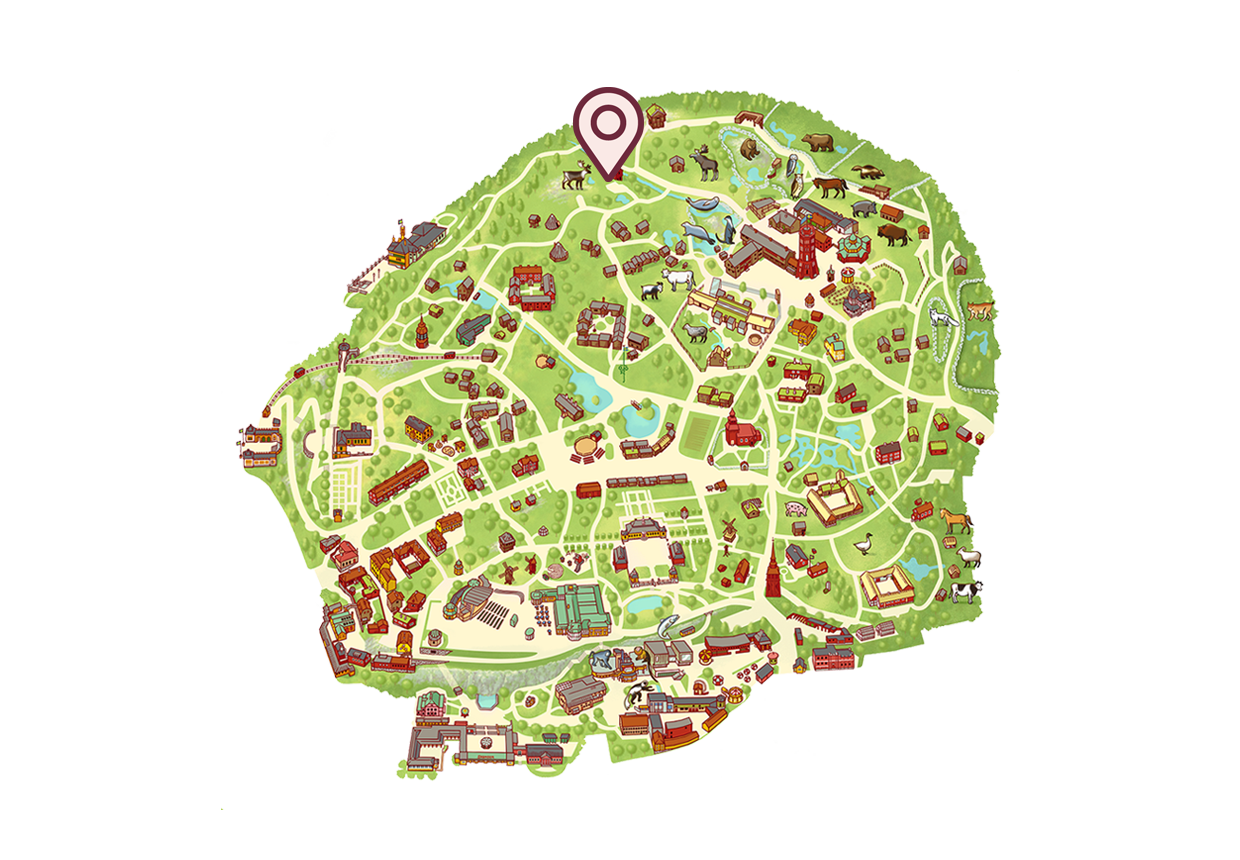- See and do
- The Zoo
- Animals at Skansen
- Reindeer
Forest Reindeer
The reindeer is the only deer species where both males and females have antlers. The forest reindeer is significantly larger than the domestic reindeer and, with its long legs and large hooves, is well-adapted to moving through deep snow.
-
Today, there are no wild reindeer left in Sweden, but domestic reindeer still graze freely in the northern parts of the country.
-
About the reindeer
Scientific name:Rangifer tarandus fennicus
Order:Even-toed ungulates
Family:Deer
Weight:60–200 kg
Siza:90-140 cm in shoulder height, 150-230 cm in length
Mating season:September–October
Gestation:Rut occurs in autumn, and calves are born in May
Number of offspring:1
Lifespan:Approx. 20 years
Eats:Plants and lichens
Number in Sweden:Extinct in Sweden. The Swedish forest reindeer became extinct at the end of the 19th century.”
-
Long legs and large hooves
The forest reindeer belongs to the deer family, which also includes elk, red deer, and roe deer. It is larger than the domestic reindeer, and an adult bull can weigh up to 180 kg. It has longer legs and larger hooves than the domestic reindeer, which helps it move smoothly through deep snow. The forest reindeer’s coat is gray-brown with light-colored legs, and its neck is often white.
Both males and females bear antlers, but the males’ antlers are much larger. These are shed annually, with the males losing their antlers in the winter and the females after calving. Unlike domestic reindeer, the forest reindeer has narrower antlers, adapted for moving between trees in forest landscapes.
The Sami name for a male reindeer is “sarv,” and for a female reindeer, “vaja.”
Migrating between forests and mountains
Historically, forest reindeer lived in Swedish forests, but the last wild populations died out in the late 1800s. Today, they live in wild populations in Russian Karelia and Finland. Forest reindeer migrate between different grazing areas depending on the season—forests in winter and mountains in summer.
Their diet varies with the season. In the summer, they eat herbs, grasses, and shoots, while their main winter food is lichen, which they dig up from under the snow with their large hooves. In the fall, their diet is sometimes supplemented with mushrooms.
Mating in autumn
The mating season occurs in the autumn, between September and October. The calves are born in May and are nursed throughout the summer. The calves grow quickly, increasing their weight from 5 kg to around 50 kg in their first six months.
Females and their calves move in groups whose size can fluctuate throughout the year, while adult bulls generally stay by themselves. During the rut, the bulls join the females, and an adult bull will typically have access to several females.
Conservation status and threats
The greatest threat to the forest reindeer globally is hunting, as the species is often viewed as an intruder on cultivated land. However, efforts are underway in Finland to preserve and restore populations. Skansen is part of this work by keeping forest reindeer for breeding purposes, contributing individuals to Finland’s reintroduction program. This work is also part of a larger European conservation program (EEP) under the framework of EAZA.
-
Did you know...?
- Reindeer migrated into Scandinavia 10,000 years ago as the ice age retreated.
- The hooves of reindeer can create a characteristic clicking sound when they walk, which helps the herd stay together in the dark.
- Skansen contributes to the conservation of forest reindeer by participating in breeding programs and supporting the reintroduction efforts in Finland.
You can find the reindeer here
